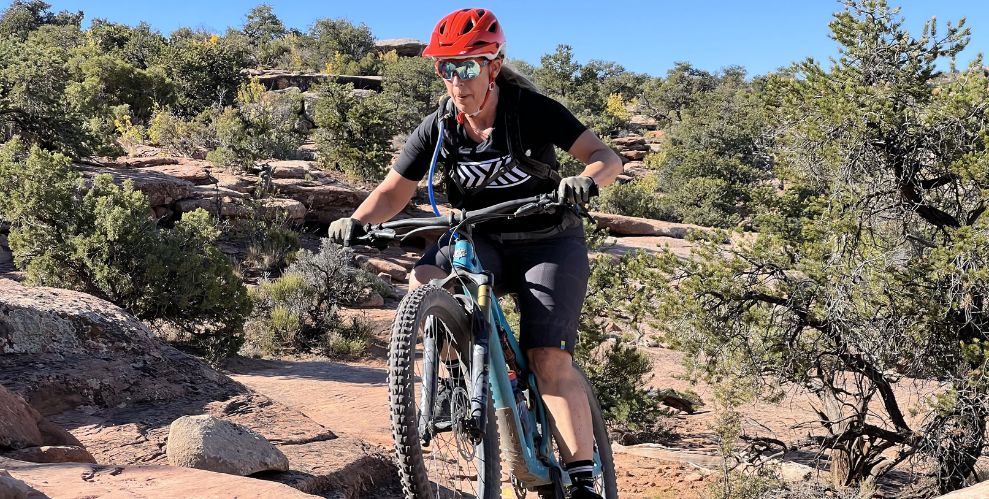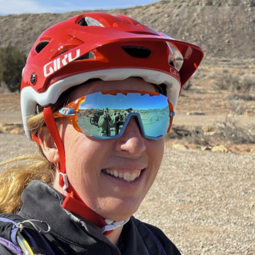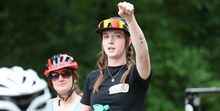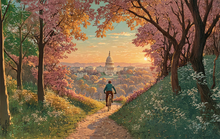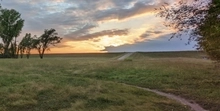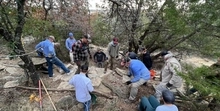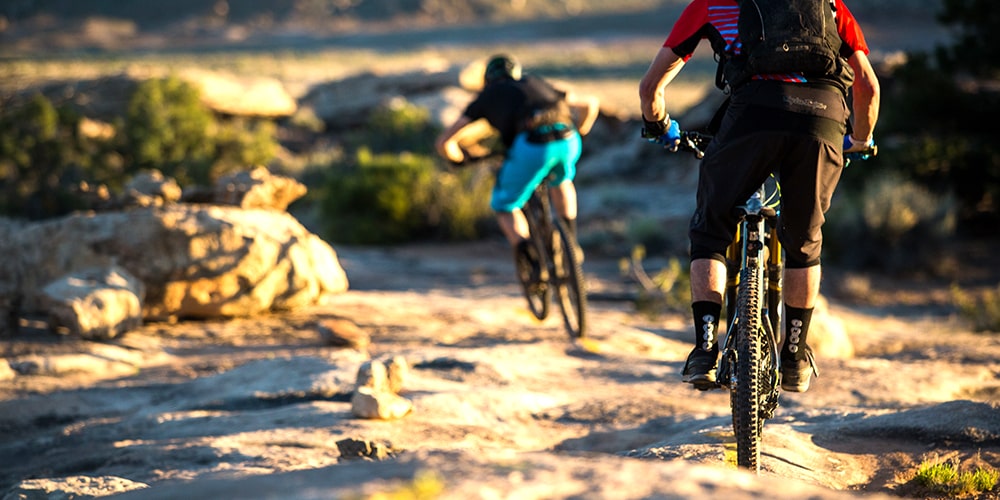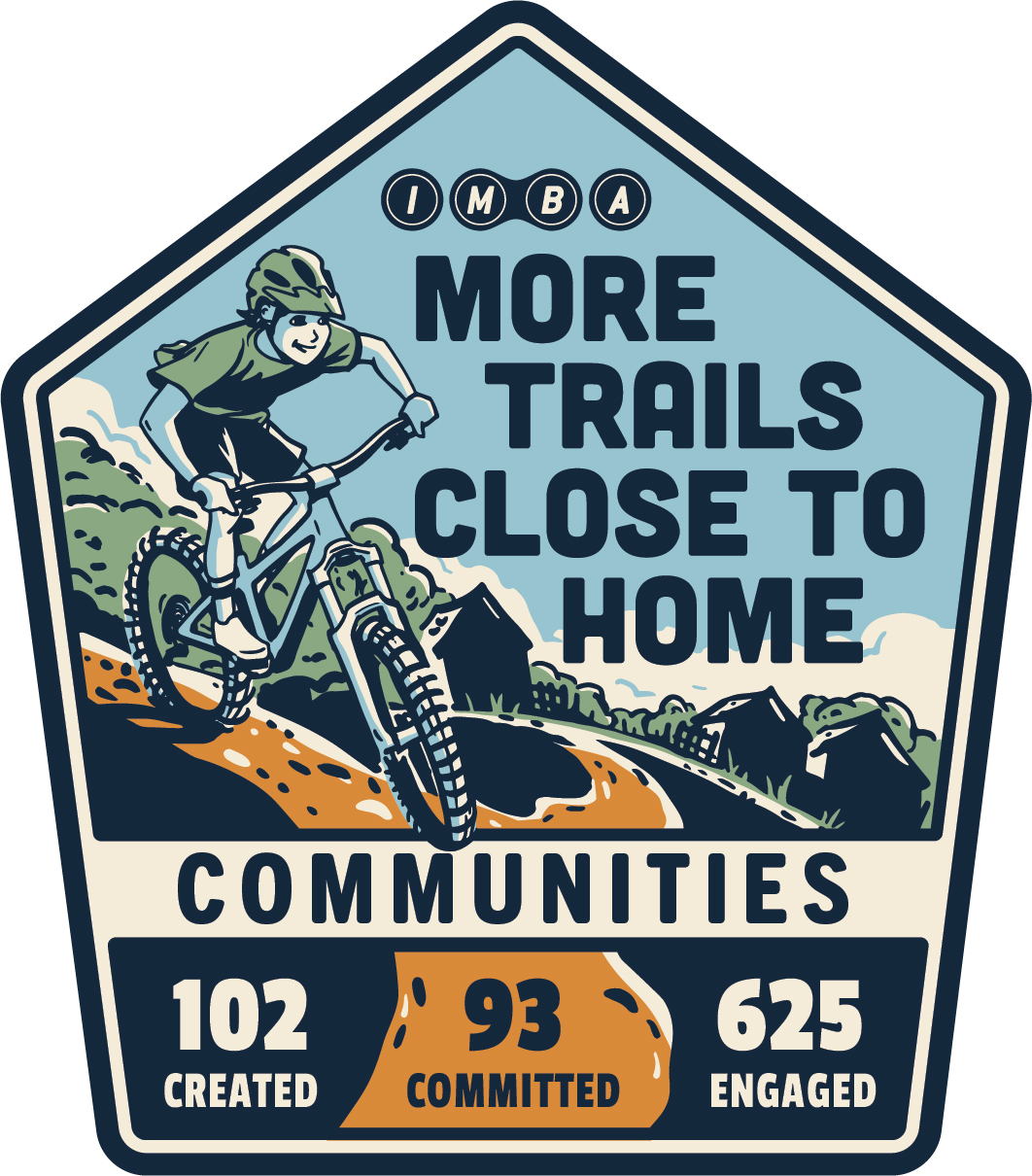Jolie Costello: Women’s Mountain Biking Day 2025
“Push!” I said, urging myself to pedal my mountain bike up the narrow ribbon of dirt on the mountain side. “You’ve got this!” Pushing myself to reach the top, my friend’s words about her recent mountain bike race played in my head: “Smooth is fast... I am capable.” The conditions for my ride were perfect. It was 79 degrees, the trail was dry, and few people were on it. If I could ride it faster today, I’d have time to catch the fun, flowy downhill at the end of it. I had 90 minutes exactly to make this happen and then I needed to be back in my truck, pulling away from the trailhead to pick up my son from camp.
I’m one of many women I know who strategically plan our days for precious riding time because we know what we learn on the trail translates directly to self-belief, inner strength, and quality of life. We work so hard, often dedicating time to the wellbeing of multiple people and the environments we live in, that the peacefulness of nature combined with the strength of our lungs and legs is a refreshing reset.
Mountain biking has been a good teacher for me. I was 22 when I started riding, and few women were on the trail and the standard bike geometry promised “endos”—the risk of flying over the handlebars. My best friend’s boyfriend and his two buddies introduced us to the sport, picking us up most Saturday mornings for a great mountain biking adventure on moderately difficult trails. These guys were happy to coach us, even showing up with muffins. I vividly remember a long climb when Mark, one of the guys, exclaimed, “Jen, you can’t stop at every water bar!” The water bars were stiff strips of car tires running across the trail to stop erosion, and they grabbed at my wheels, bouncing me hard. He launched into a lesson for teaching me how to get over them.
After a couple of years, my best friend and I had gained enough skill to enter beginner mountain bike races. She had the lungs for climbing but was cautious on the downhill, while I was slower climbing but bombed down the hill. I was having a blast with mountain biking, but it wasn’t only the joy of riding that was so rewarding.
It turns out that maneuvering my bike over roots and rocks has taught me some major life skills like taking risks, finding a Flow state, and learning self-belief. Biking gave me the chance to play in my potential—to stand at the edge of the unknown to make a discovery. I was gaining the confidence I needed to rise up and say “YES!” to opportunities even when they scared me. These scenarios could be a gnarly downhill with tight switchbacks, a new project at work, a trying parenting situation, or an intimidating social exchange. What I was learning from mountain biking was serving me in my day-to-day life.
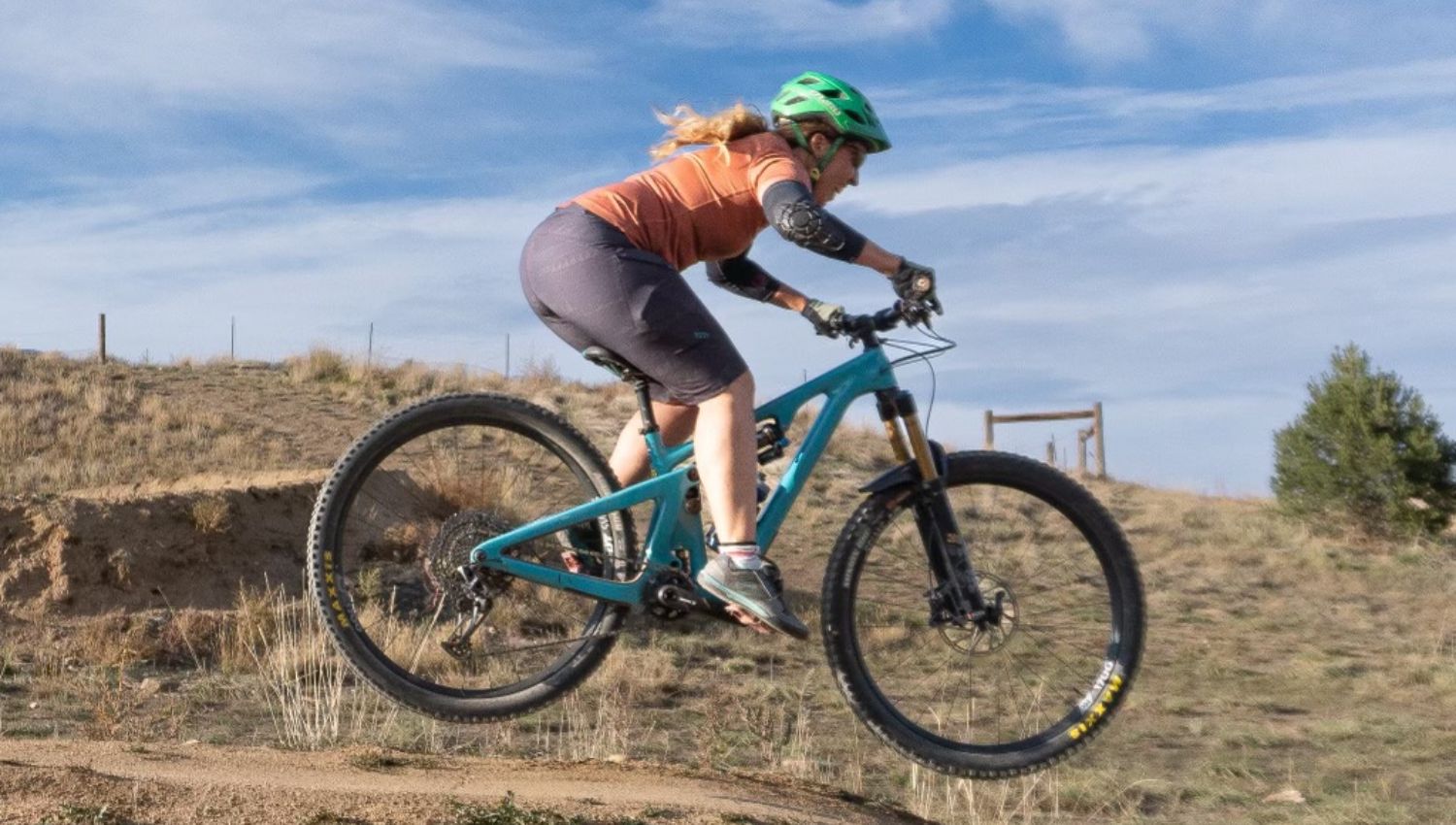
Taking a Risk
Most of us wrestle with taking a risk. Questions arise like, “Can I do this? Should I do this?” And if it seems like a big risk, the indecision can affect our bodies, too. Nausea and muscle stiffness are common. In mountain biking, we tend to tightly grip our bars and oversteer. We stand too tall on the pedals to get the best view of an obstacle instead of relaxing into a deep hinge for stabilization. We lock our eyes on a drop instead of seeing it as a feature in a larger landscape, and then hit it like a brick. All of these are a set-up for a crash, and the immediacy of the outcome teaches us.
How does this translate to our daily life? First, we get good at selecting the risks we’ll take. We learn to choose those that will help us thrive and pass on the ones that are foolish and costly. Second, the menu of risks we’ll tolerate grows as we build skill and confidence, and this affords us more options to create what we want. Even if we’re cautious by nature, we can manage our discomfort to press against the edge of our container (our previously defined limits) to get what we want.
Playing with risk in an arena like biking, where we’re not in a work environment, we can explore what we’re made of when we must take immediate action to manage a problem or obstacle. There’s a jagged rock. A drop. A root. A climb. Exploring our nature on the bike trail transforms our fear of failing into an exercise of self-discovery. We build our destiny when we quit holding ourselves back and chronically underestimating our abilities to avoid facing disappointment or the unknown. And as we practice taking risks, we develop the muscles called resilience and persistence. Almost by accident, we discover how to commit to taking a risk. And how the Flow we find in intense, joyful concentration gives us access to our genius.
Finding Flow
Mountain biking is a portal to Flow. When the ride offers a challenge, we’re required to focus and stretch our skills in a situation where the consequence of failure isn’t unacceptable. As we successfully link one maneuver to the next to ride over rocks, achieve speed with control, or hold our line down a narrow descent, our hearts pump and our exhilaration rises. We ride our strengths and pull from our skill sets to creatively surpass our perceived limits. Our minds and bodies unite in action, and through action, we become totally absorbed in the moment.
Flow is a dynamic state of consciousness described by positive psychologist Mihaly Csikszentmihalyi as an “optimal experience.” In Flow, our full engagement generates happiness even when the task is mind-stretching. In fact, challenge is a key component of Flow, and risk-taking is a catalyst when the problem is within our ability to solve it. If the risk is too great, fear blocks Flow, decentering us and interrupting our actions. In mountain-biking, over-braking caused by fear disrupts our momentum, and we steer our bike right into what we wanted to avoid. But if the ride is too simple, we’ll only reach Flow if we facilitate it on purpose by defining a challenge like beating our previous record and then organizing our actions to make it happen.
Within Flow, we express our genius and delight in our work. We connect with our purpose and potential. We experience heightened creativity and productivity. We take huge leaps forward as we learn to wield our strengths, and our skills reach new levels. Never returning to the same starting point, we progress and grow, and new opportunities present.
Learning how to facilitate a Flow state is one of the most valuable lessons I’ve gained from mountain biking. I experienced Flow before I began mountain-biking, but never in an environment that was reproducible. Now, I know how to find Flow in a variety of situations. Whether I’m at work or home, in finding Flow, I’m more efficient and exact. It supports me to make dinner while I help my son with homework. It enables me to focus on patients in my clinic. It’s a process of centering myself, focusing on the project, trusting in my ability to respond, and then following my instincts to bring everything I have to the moment.
Building Self-belief
Self-belief is our trust in our capacity to successfully perform a task or achieve a goal. On a mountain bike, self-belief is what keeps our pedals turning! When we round a curve and suddenly come upon a rocky climb, if our self-belief doesn’t carry us through, our self-doubt will slam on the brakes!
According to Psychologist Albert Bandura, people are more likely to accept a challenge, put forth terrific effort, perform well, and persist despite difficulty when they have strong self-belief. He says that the tendency for effective people to ‘expend more effort and persist longer’ is of particular importance because most personal success requires persistent effort.
The self-belief we gain in biking leads to adaptive coping strategies that are also rock solid off the trail. Climbing steep hills, we learn to dig deep, hold our center, and maintain momentum. We get a taste of how hard we can work and still be okay. Riding a trail alongside a steep cliff, like Captain Ahab, in Moab, Utah, we learn to stay focused on precisely where we want to go. Tackling one small risk at a time, we have ample opportunity to build our self-belief. Even when we only partially succeed — even when we make it only halfway through a challenge, when we get our tire only partially up onto a rock or fall into a bush but come out of it laughing, we begin to trust ourselves. Incrementally, we gain the technical biking skills we need to succeed, whereby we learn a process for succeeding at other difficult activities. Strong self-belief motivates us to define and accept challenges beyond biking because we’ve learned to trust that we’re capable, brave, and resilient. I wasn’t expecting to learn these meaningful life skills when I started riding, and yet they’ve become the traction beneath my tires. The mountain biking experience has “paid it forward.”
For the first thirty minutes of my ride this day, my legs were tired, and I was breathing hard at my fast pace. I was uncomfortable, but instead of seeing it as a distress signal, I pressed on to meet the challenge. This was my chance to grow stronger and faster. This was my chance to top my previous speeds—to mix things up and invite a breakthrough. To enhance my time, I chose smoother lines, rounded the corners more tightly, pumped through the bumps, and sailed over the drops as fast as I could. Despite this not being a technical trail, this challenge elevated me into a Flow state because I let it be fun. I flew like the wind, and I had time to catch the happy downhill section at the bottom. Riding was a total delight, and I set two new personal records for the ride. As my friend says during her rides, “I am capable.”
Then I was off to go get my son.
This content was originally posted on https://jennifercaragol.com/ and was repurposed by Dr. Jen in honor of Women’s Mountain Biking Day 2024.
